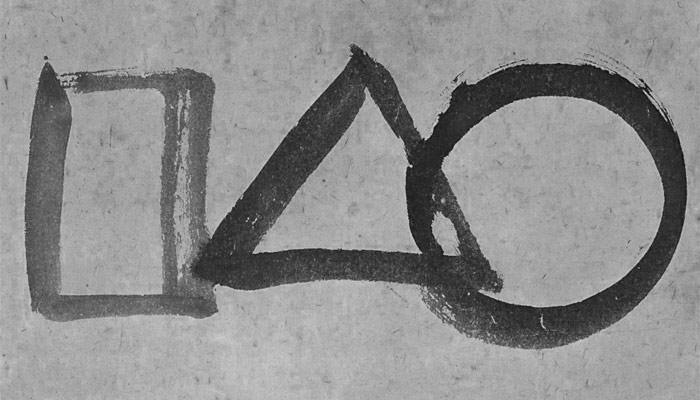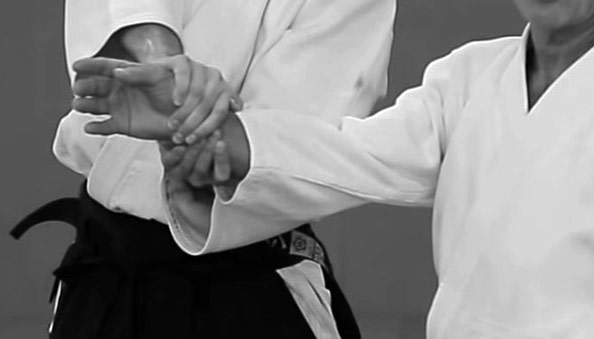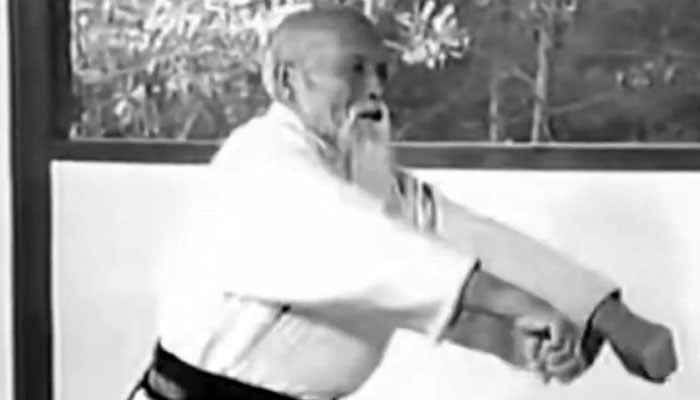Waza 技
-
The Art of Shikko and Suwari Waza in Aikido
Shikko 膝行, often referred to as knee-walking, is a fundamental movement method in Aikido. Aikido techniques performed from a seiza 正座 (seated) or shikko position are called suwari-waza 座り技. Suwari-waza is a distinguishing feature of Aikido, rarely seen in other martial arts. To understand why Aikido practices shikko and suwari-waza, one must trace back to Daito-ryu Aiki-jujutsu 大東流 合気柔術, which Morihei Ueshiba, the founder of Aikido, studied before establishing Aikido. Daito-ryu is said to be an Aizu han no otome-ryu 会津藩の御留流, a secret martial art of the Aizu 会津 domain. The Aizu han was a powerful and significant feudal domain during the Edo period 江戸時代, located in the westernmost region…
-
Unleashing the Power of Aiki: Arcade Fighters in Motion
Arcade fighting games have long served as arenas where diverse martial arts styles collide. Among the plethora of techniques showcased in these games, Aikido and similar martial arts have secured their place in the roster of iconic characters. This article delves into the portrayal of Aikido and akin disciplines in arcade fighting games, examining their impact on character design and gameplay dynamics. Aikido, renowned for its focus on redirecting an opponent’s energy with harmonious movement, has intrigued game developers aiming to craft distinctive and authentic characters. The core tenets of this martial art, such as blending, circular motion, and joint locks, align seamlessly with the dynamic and acrobatic nature of…
-
Randori: The Heart of Aikido’s Dynamic Training
Randori 乱取り is a dynamic training exercise practiced in various Japanese martial arts, including Judo and Aikido. The first character, ran 乱, means “disorder” or “chaos,” while dori 取り means “taking” or “capturing.” The earliest recorded use of the term dates back to the military manual Koyo Gunkan 甲陽軍鑑 during the Edo period, where it referred to raiding an enemy territory to seize goods. In martial arts, randori involves facing one or multiple attackers in an unpredictable and dynamic setting, unlike pre-set attack-defense sequences such as kumite 組手 in Karate or kumijo 組杖 in Aikido. Randori is especially common in Judo. Out of its three technique categories – throwing techniques…
-
Sangen – The Triangle, Circle and Square in Aikido
The founder of Aikido, Morihei Ueshiba, used the symbols of the triangle, circle, and square (△ ○ □) to convey key philosophical concepts central to Aikido. These symbols represent the Sangen 三元 in the Shinto concept of Ichirei Shikon Sangen Hachiriki 一霊四魂三元八力, a framework used to explain the nature of the universe. While a detailed explanation of this concept is beyond the scope of this article, its basic understanding is as follows: Ichirei is the One Spirit, the single source of creation that forms all existence. Shikon refers to the four souls 奇霊, 荒霊, 和霊, 幸霊, which represent Wisdom 智, Bravery 勇, Intimate/Close 親 and Love 愛. Hachiriki refers to…
-
Kuzushi – The Subtlety of Unbalancing Your Opponent in Aikido
Kuzushi 崩し is a term widely used in Japanese martial arts, referring to the act of breaking an opponent’s balance. The word “kuzu” 崩 literally means “crumble” or “collapse,” and “kuzushi” generally signifies the concept of unbalancing an opponent. While most commonly associated with Judo, the term is also employed in Aikido and some other martial arts, though its interpretation can vary slightly across different disciplines. Judo competitors are constantly seeking opportunities to break their opponent’s balance In Aikido, kuzushi occurs at the moment of initial contact. On a physical level, it is achieved through a combination of timing, positioning, and posturing. By employing precise timing, the nage 投げ (defender)…
-
Exploring the Significance of Torifune and Furitama in Aikido and Shinto Practice
Torifune and Furitama are commonly practiced preparatory exercises in Aikido. Torifune 鳥船, which is typically translated as “bird rowing” or literally as “bird boat,” is also known as funakogi undo 船漕ぎ運動 or “boat rowing exercise.” The earliest mention of Torifune was in Kojiki 古事記, an ancient Japanese chronicle of myths, where it was referred to as Ame no Torifune 天の鳥船 (Heavenly Bird Boat). It was the name given to one of the deities born from Izanagi 伊邪那岐 and Izanami 伊邪那美, two of the most important kami (deities) in Japanese mythology. They are sister and brother, and also husband and wife, and they are the creators of the Japanese archipelago and…





